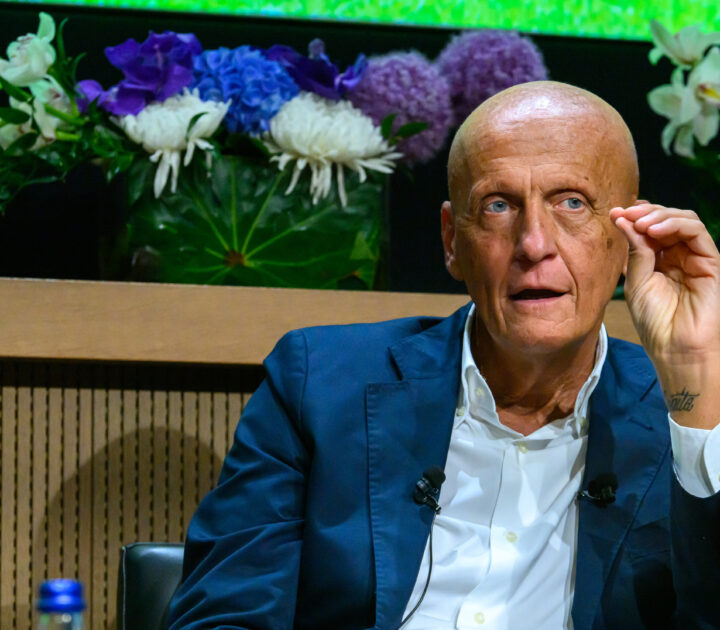
The death of strategy
In a world of never-ending change, it’s either one or the other; we can no longer count on having both. As innovation accelerates its assault on what we formerly referred to as “our planning process,” and as S-curves accordingly collapse, each one on top another, time is compressed. In the rubble of what is left of our strategy structure, we find that what we’ve lost is the orderly and measured progression of time. Tim Brown, of IDEO, recently put it this way at the Global Peter Drucker Forum 2016, in Vienna: “So many things that used to have a beginning, a middle and an end, no longer have a middle or an end.” Which is gone: strategy or tactics? And, does it matter?
Without a proper middle, or end, for any initiative, the distinction between strategy and tactics blurs: tactics become strategy, especially if they are performed in a coherent and consistent fashion. Strategy, in turn, now takes place in the moment, in the form of an agglomeration of a series (or not) of tactics. Former eBay CEO John Donahoe, observed at a recent Stanford GSB keynote lecture, that: “There wasn’t one moment during the last 30 years where I was certain I was doing the right thing. There wasn’t one moment when I was in the middle of it that I felt, ‘Great, I’ve got this all figured out.’ I still don’t.” In such situations, the way you behave in the marketplace, which used to be guided by “strategy,” is now more likely to be the result of a multitude of experiments, hopefully coherent and relatively focused, or, in the worst case, possibly spastic and incoherent. Can these be developed in ways that encourage reflection, learning and progression, especially when the time-frames are so condensed? Probably not, or at least not in the way that we used to think was possible. No wonder John Hagel, of Deloitte’s Center for the Edge, can demand being spared forecasts that are more than 6 months out, or less than 20 years. In that great gulf between the immediately obvious and the structurally predictable [demographics, technologies, etc.], lies a wealth of guesses, hunches and predictions that are often more fiction that fact, and are almost always wrong. Yet, it is exactly within this phantom space that strategy has for so long prevailed. Do we even want to mourn its loss?
With tactics in the driver’s seat, everything changes: long-term vs. short-term becomes meaningless; prediction is still possible as an activity, but probably futile in its results; action beats analyzing; correctable replaces dependable. The one thing that we know is that it’s in the “learning,” rather than the “deciding,” that change will occur, and with that in mind, we can suggest some guidelines for addressing the future:
- Leadership attributes will change greatly. My IMD colleague, Michael Yaziji, has suggested that “competencies” will become less important (especially in a world where expertise becomes commoditized) and that “intentions” will gain greater influence; a finding that agrees with basic research’s traditional preference for “betting on people” when it comes to assessing far-out, blue-sky proposals.
- As a result, “innovation” should be regarded as a verb that characterizes the way we work, rather than as a noun that refers to departments, expertise or projects.
- This means that everyone can be a change-agent; everyone has the right to be innovative; and everyone, perhaps, should think of themselves as entrepreneurial. There is no single place on the Business Model Canvas where disruptive innovation has not occurred!
- Small bets, many small bets, are the best way to engage with the unknown future. Intuit’s founder Scott Cook “explicitly links a culture of experimentation to empowerment. A great business experiment has to inspire the same degree of top-management enthusiasm and engagement as a great business plan.” And, he has facilitated this by creating a “Lean Experimentation Toolkit” for everyone in the organization to use.
- And, if small bets are to be the preferred method of engaging with the future, then, as Rita McGrath has told us, withdrawing from such bets might be as important as how you enter them.
- We need to take “slow” & “sequential” out of everything we do in order to become faster and more agile. Haier has done this by insisting on “parallel” conversations in order to save time in their commercialization cycle, but even more surprisingly is the revelation that the new British Chancellor of the Exchequer, Phillip Hammond, has insisted upon “much shorter briefings, delivered to him two or three times a day for rapid decisions” rather than relying exclusively upon the famous overnight reviews of the “red boxes” for policy decisions.
- In fact, simple processes, such as how you put on and take off protective clothing opened the door for “outsiders” to help contain the Ebola epidemic of 2014, with imaginative new approaches to patient care; while Airbnb’s serving of different meals on different floors to encourage “chance encounters” is a way of making serendipity, less serendipitous.
These examples are all relatively small steps, but they are in the right direction, and can lead to revolution; they are all part of changing organizational and leadership mind-sets. They are also all illustrative of activist approaches to leadership and may eventually show that the illusion of strategy was in reality more a legacy artefact of slower and less volatile times, than a science to be handed-down to next generations.
Bill Fischer is a Professor of Innovation Management at IMD. He directs the Being Innovative Global Leadership in the Cloud program.
Research Information & Knowledge Hub for additional information on IMD publications
In that article I explained that modern safety leaders need more than just technical skills to survive in a VUCA (Volatile, Uncertain, Complex & Am...
The case study delves into strategic transformation and leadership transitions at Unilever since 2009. Unilever has been an industry leader of busi...
Many executives say they don’t have time for mindfulness practices, such as daily meditation. An alternative is micro-presence: weaving moments of ...
Technological innovation, advances in remote work, and reshaped post-pandemic priorities have led to companies hiring fractional leaders, or part-t...
The payment processing industry in Europe had operated in largely the same way for decades. A standard system of financial processing and clearing ...
in Safety and Health Practitioner 29 January 2019
Research Information & Knowledge Hub for additional information on IMD publications
Research Information & Knowledge Hub for additional information on IMD publications
Research Information & Knowledge Hub for additional information on IMD publications
Research Information & Knowledge Hub for additional information on IMD publications
in I by IMD 5 July 2024
Research Information & Knowledge Hub for additional information on IMD publications
in HBR.org 2 July 2024
Research Information & Knowledge Hub for additional information on IMD publications
in I by IMD 28 June 2024
Research Information & Knowledge Hub for additional information on IMD publications
Research Information & Knowledge Hub for additional information on IMD publications
Research Information & Knowledge Hub for additional information on IMD publications
Research Information & Knowledge Hub for additional information on IMD publications




